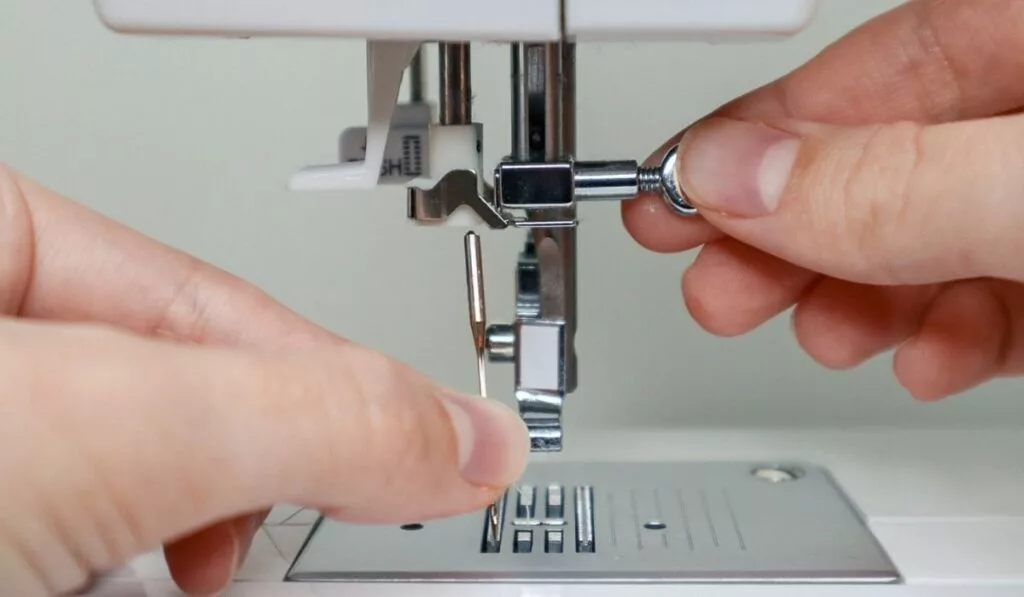A sewing machine is an essential tool for anyone involved in sewing, whether for personal projects or professional use. Over time, sewing machine needles become dull or bent, affecting stitch quality and fabric integrity. Knowing how to change needle on Singer sewing machine ensures smooth sewing performance and prevents thread breakage or skipped stitches.
Replacing a needle on a Singer sewing machine is a simple but crucial maintenance step. Whether you are a beginner or an experienced sewer, learning the proper method can enhance the efficiency and longevity of your machine. This guide covers why needle replacement is necessary, the tools required, and a detailed step-by-step process to change the needle safely and correctly.
Why Changing the Needle is Important
The needle is one of the most critical components of a sewing machine, directly affecting stitch quality, thread tension, and fabric handling. Replacing the needle regularly prevents sewing issues and keeps the machine in optimal working condition.
Signs That You Need to Change the Needle
- Skipped Stitches – A bent or dull needle may fail to create proper stitches, causing irregular patterns.
- Fabric Puckering – If the fabric gathers or wrinkles while sewing, a worn-out needle may be the cause.
- Thread Breaking Frequently – A damaged needle can cause excessive friction, leading to frequent thread snapping.
- Uneven or Loose Stitches – A needle that is not properly positioned or has become blunt may fail to create uniform stitches.
- Clicking or Popping Sounds – A needle striking the machine’s plate or bobbin case may indicate misalignment or damage.
By recognizing these signs, you can take timely action to replace the needle and maintain seamless sewing operations. Learning how to change needle on Singer sewing machine is a simple solution to many common sewing issues.
Tools and Preparation for Needle Replacement
Before replacing the needle, it is important to gather the necessary tools and prepare the machine for a safe and hassle-free process.
Essential Tools Required
- A New Needle – Ensure you use the correct needle size and type for your fabric. Singer needles are available in various sizes, such as 70/10 for lightweight fabrics and 90/14 for thicker materials.
- A Small Screwdriver – Most Singer sewing machines come with a screwdriver to loosen and tighten the needle clamp screw.
- A Soft Cloth or Paper Towel – This helps to clean any lint or dust around the needle area.
- Tweezers (Optional) – Useful for handling small parts or removing broken needle fragments.
Preparing the Sewing Machine
- Turn Off the Machine – Unplug the machine to avoid accidental movement while replacing the needle.
- Raise the Needle – Use the handwheel to lift the needle to its highest position.
- Lower the Presser Foot – This provides better visibility and accessibility to the needle area.
- Secure the Machine on a Stable Surface – Ensuring stability prevents accidental damage during the replacement process.
With these preparations complete, you are ready to learn how to change needle on Singer sewing machine efficiently and safely.
Step-by-Step Process to Change the Needle
Changing a sewing machine needle is a straightforward task when done with proper technique. Follow these steps carefully to ensure a correct replacement.
Step 1: Loosen the Needle Clamp
Using the small screwdriver, turn the needle clamp screw counterclockwise to loosen it. Hold the old needle with your fingers to prevent it from falling into the machine. Once the clamp is loose, carefully pull the needle downward and remove it.
Step 2: Inspect and Dispose of the Old Needle
Examine the removed needle for any signs of bending or dullness. If it is damaged, discard it safely in a needle disposal container to prevent injuries.
Step 3: Insert the New Needle
Take the new Singer needle and ensure that the flat side of the needle shank faces the back of the machine. Gently slide the needle up into the needle clamp until it reaches the highest position.
Step 4: Tighten the Needle Clamp Screw
While holding the needle in place, use the screwdriver to tighten the needle clamp screw securely. Ensure the needle is firmly in position, as a loose needle may cause stitching problems or fall out during use.
Step 5: Check the Alignment
After securing the needle, manually turn the handwheel to check for smooth movement. If the needle does not hit the presser foot or bobbin case, it is properly aligned and ready for use.
With these steps completed, you have successfully learned how to change needle on Singer sewing machine, ensuring smooth and efficient sewing performance.
Best Practices for Needle Maintenance
Regular needle maintenance can prolong the life of your Singer sewing machine and improve sewing results. Following best practices helps prevent fabric damage and machine wear.
When to Change the Needle
- After every 8-10 hours of continuous sewing.
- When switching to a different fabric type (e.g., from denim to silk).
- If the needle becomes dull, bent, or broken.
- Before starting a new sewing project to ensure clean and precise stitches.
Proper Needle Storage
Store new and used needles in labeled containers to prevent mix-ups. Avoid leaving loose needles near the machine, as they can cause accidental damage or injury.
Selecting the Right Needle
Choose a needle based on the fabric and thread type:
- Universal Needles – Suitable for most fabrics like cotton, polyester, and blends.
- Ballpoint Needles – Best for knit and stretch fabrics.
- Jeans/Denim Needles – Designed for thick fabrics like denim and canvas.
- Microtex Needles – Ideal for delicate fabrics like silk and chiffon.
Using the correct needle ensures better stitch quality and prevents sewing difficulties. A well-maintained needle system keeps your machine running smoothly and enhances the sewing experience.
Conclusion
Knowing how to change needle on Singer sewing machine is a fundamental skill that ensures better sewing results and extends the machine’s lifespan. Regular needle changes help prevent skipped stitches, thread breakage, and fabric damage. By following the correct steps, using the right tools, and maintaining proper needle care, you can keep your Singer sewing machine in optimal condition. Whether sewing for personal projects or professional work, a well-maintained needle system guarantees smoother stitching and more enjoyable sewing experiences.
Frequently Asked Questions
Q: How often should I change the needle on my Singer sewing machine?
A: It’s recommended to change the needle after every 8-10 hours of sewing or when switching fabric types.
Q: What is the correct way to insert a new needle in a Singer sewing machine?
A: Insert the needle with the flat side facing the back of the machine and push it up until fully seated before tightening the clamp.
Q: Why is my needle hitting the bobbin case after replacement?
A: The needle may not be properly aligned; ensure it is fully inserted and facing the correct direction.
Q: Can I use any needle for my Singer sewing machine?
A: No, you should use Singer-compatible needles and choose the right type based on your fabric and thread.
Q: What should I do if my thread keeps breaking after changing the needle?
A: Ensure the needle is properly installed, use the correct thread type, and check for tension issues in the machine.



